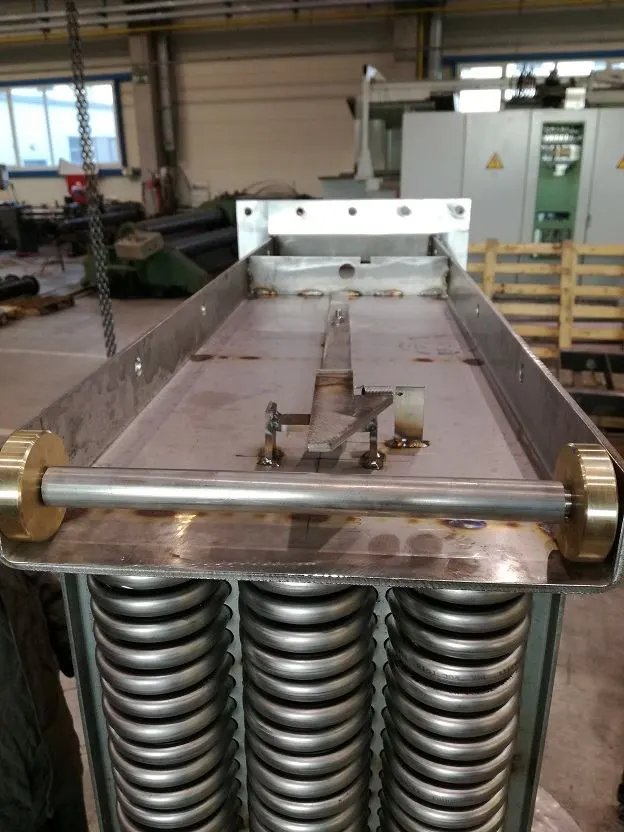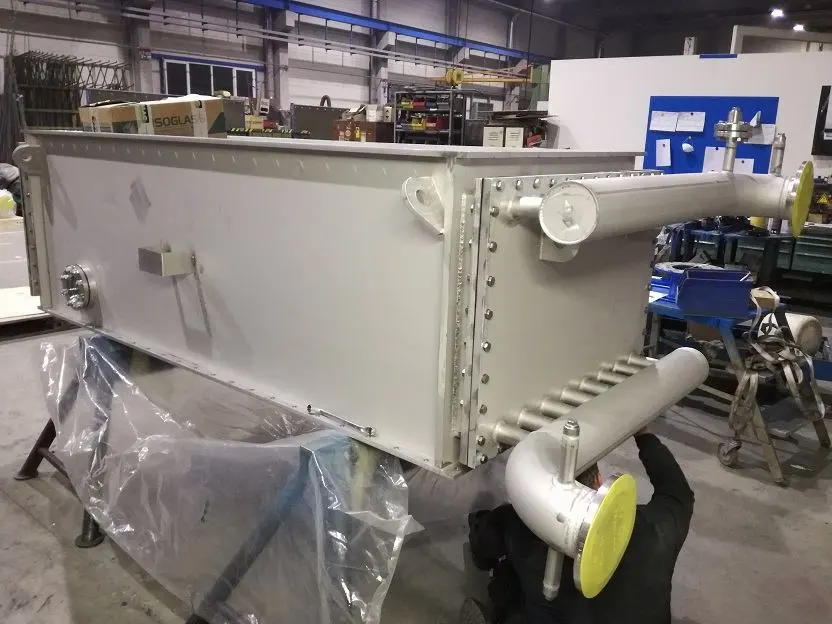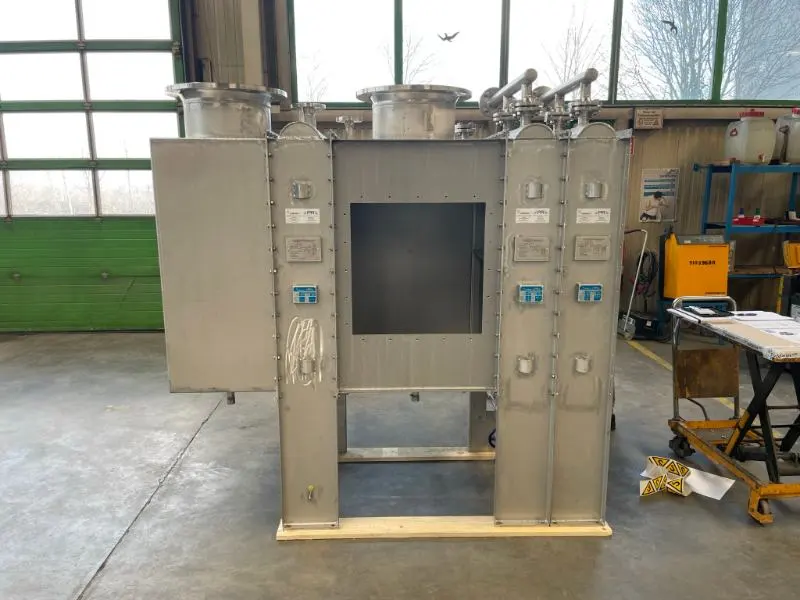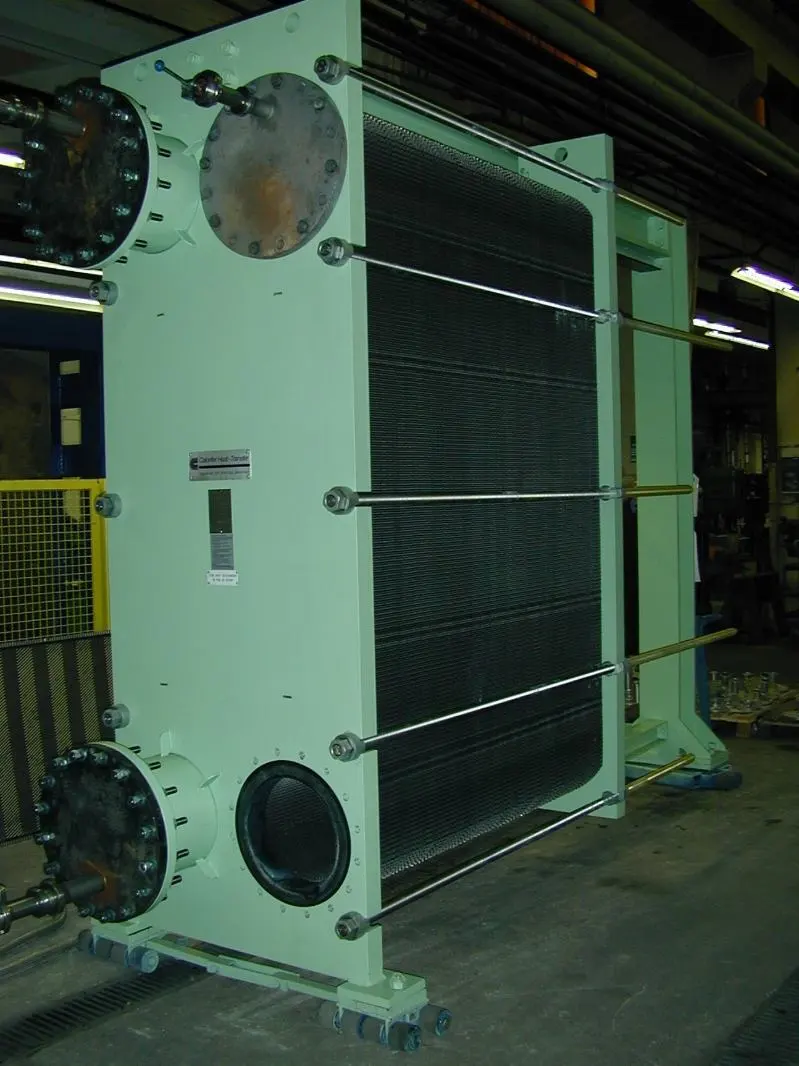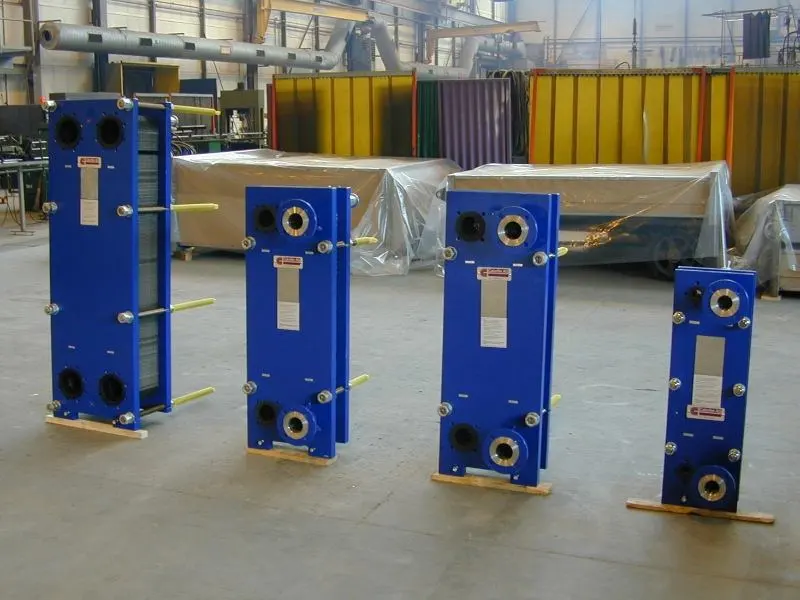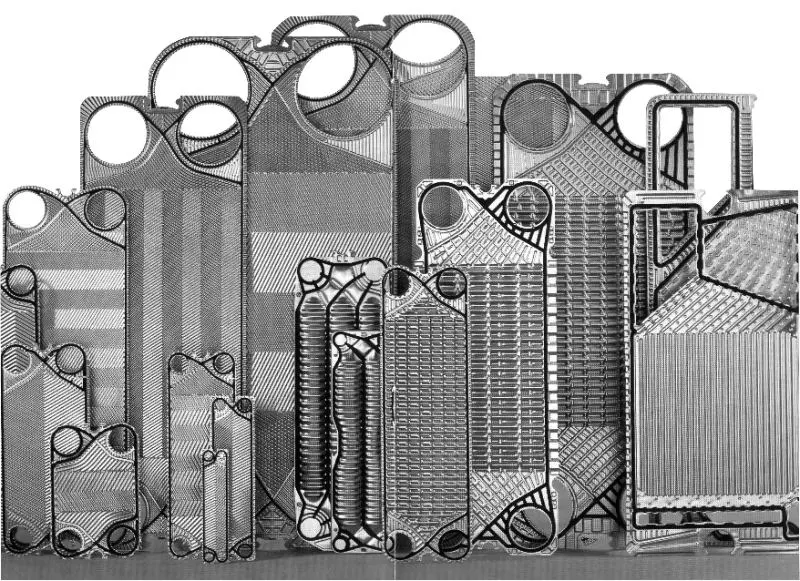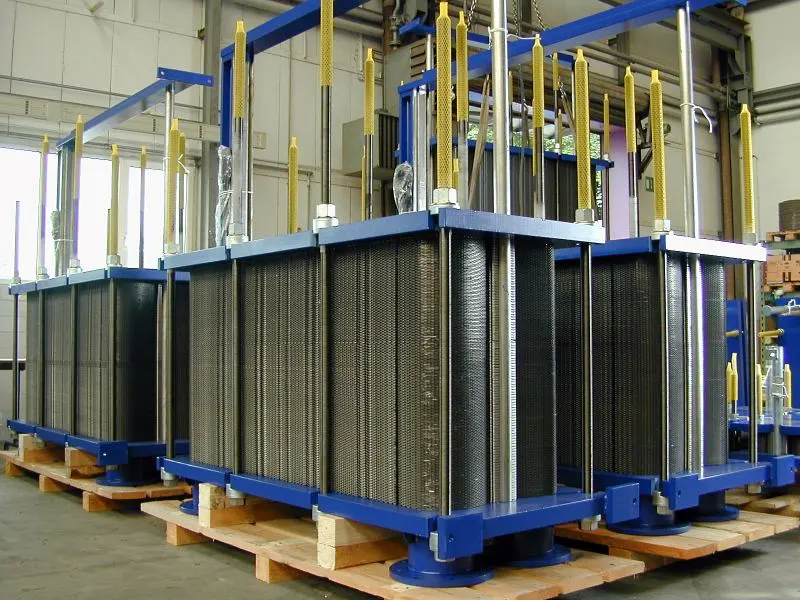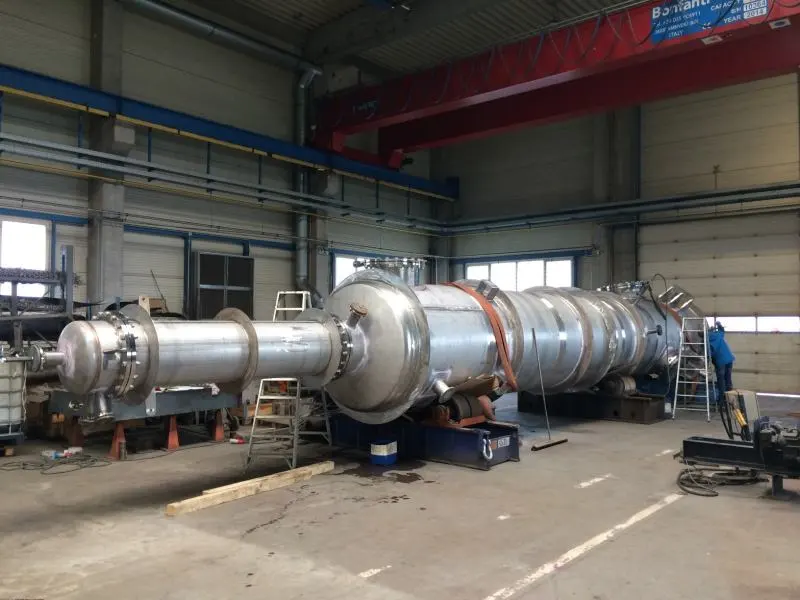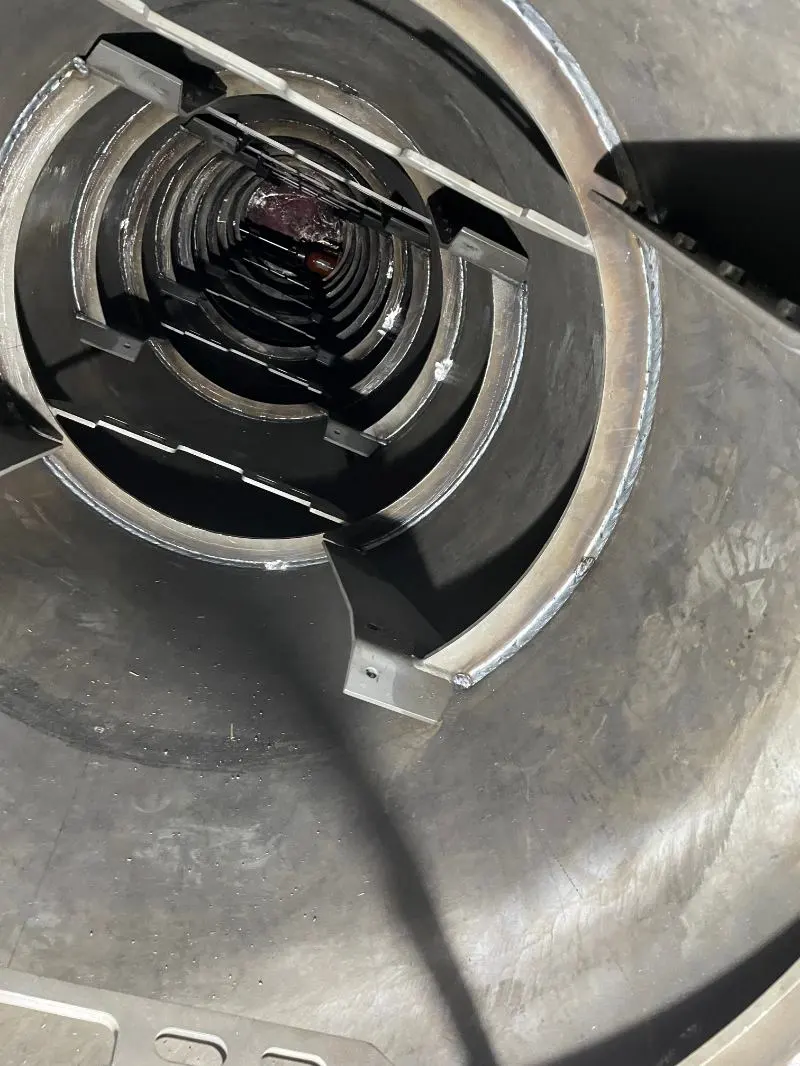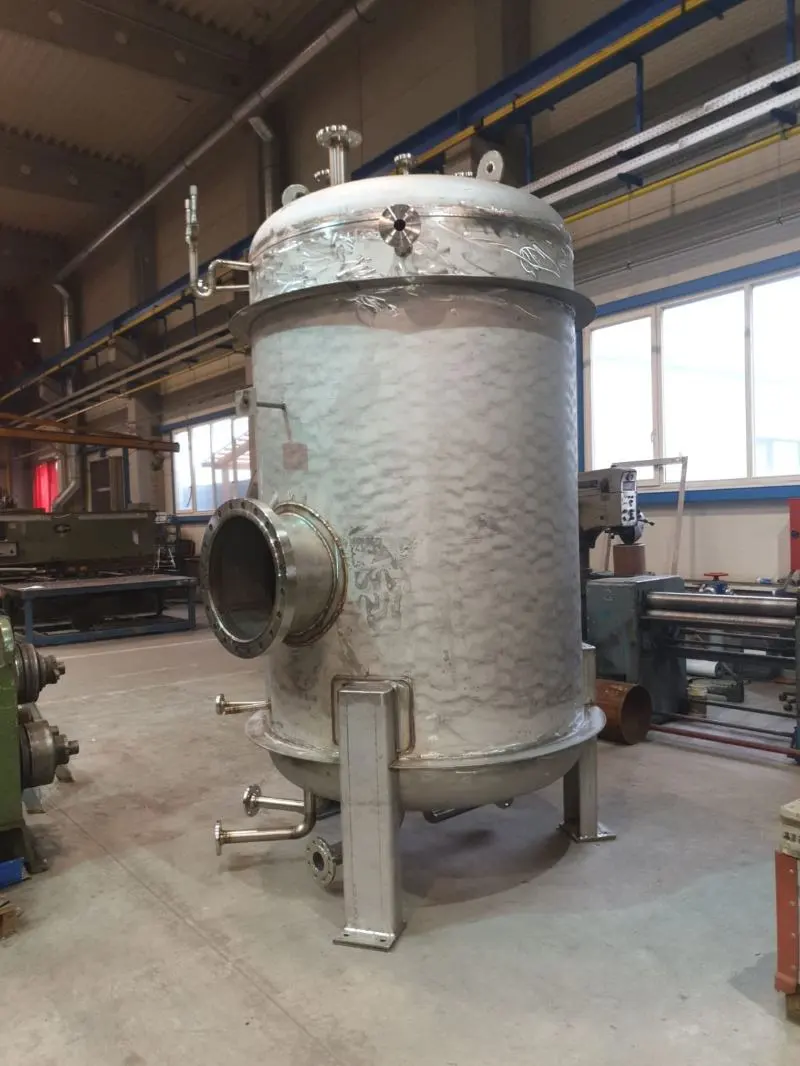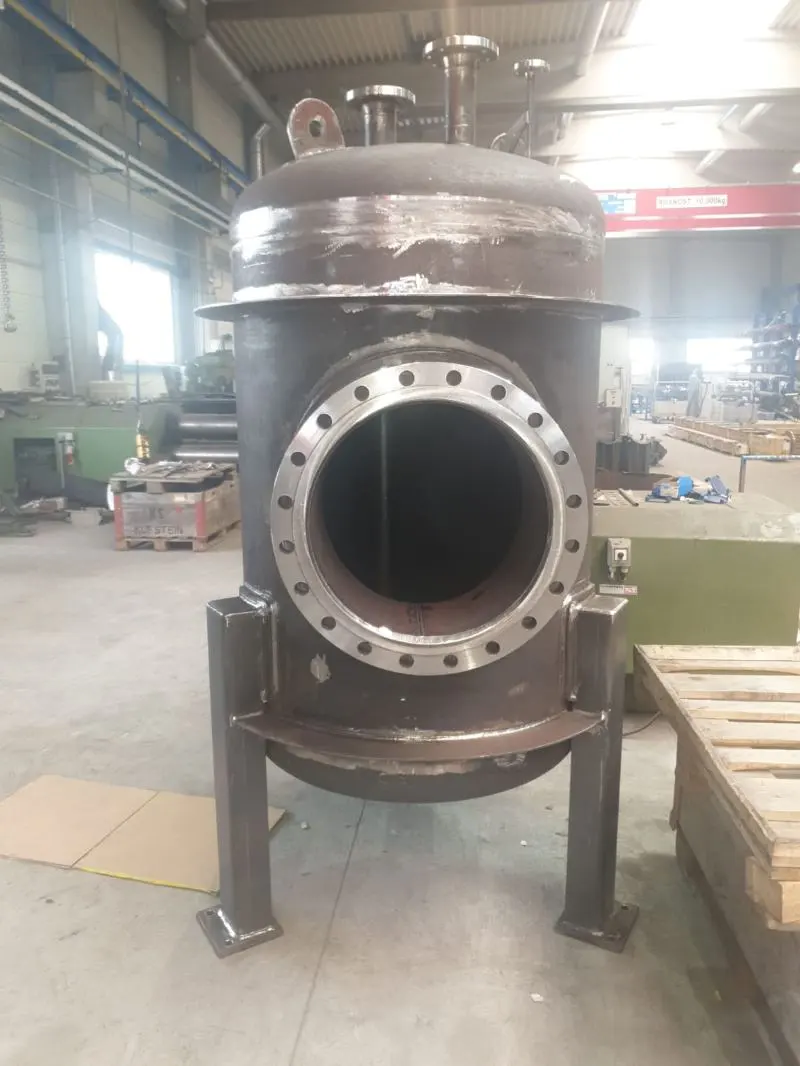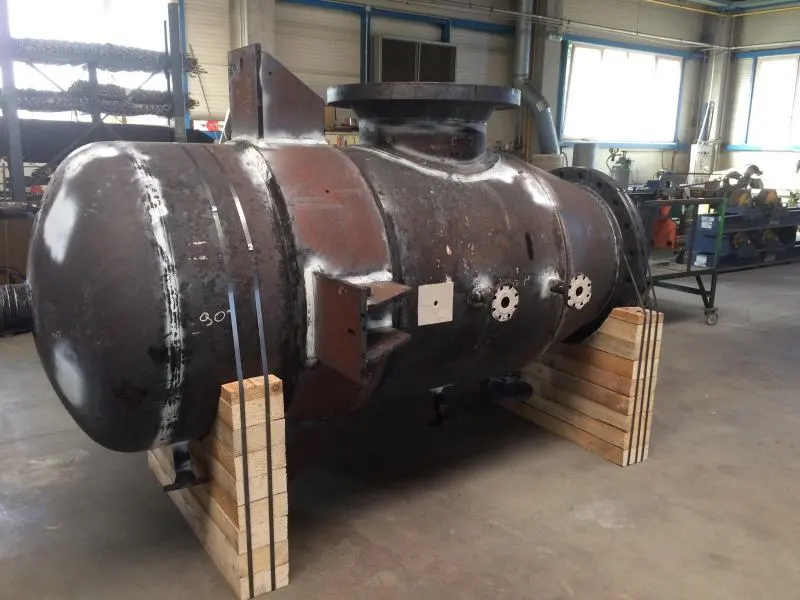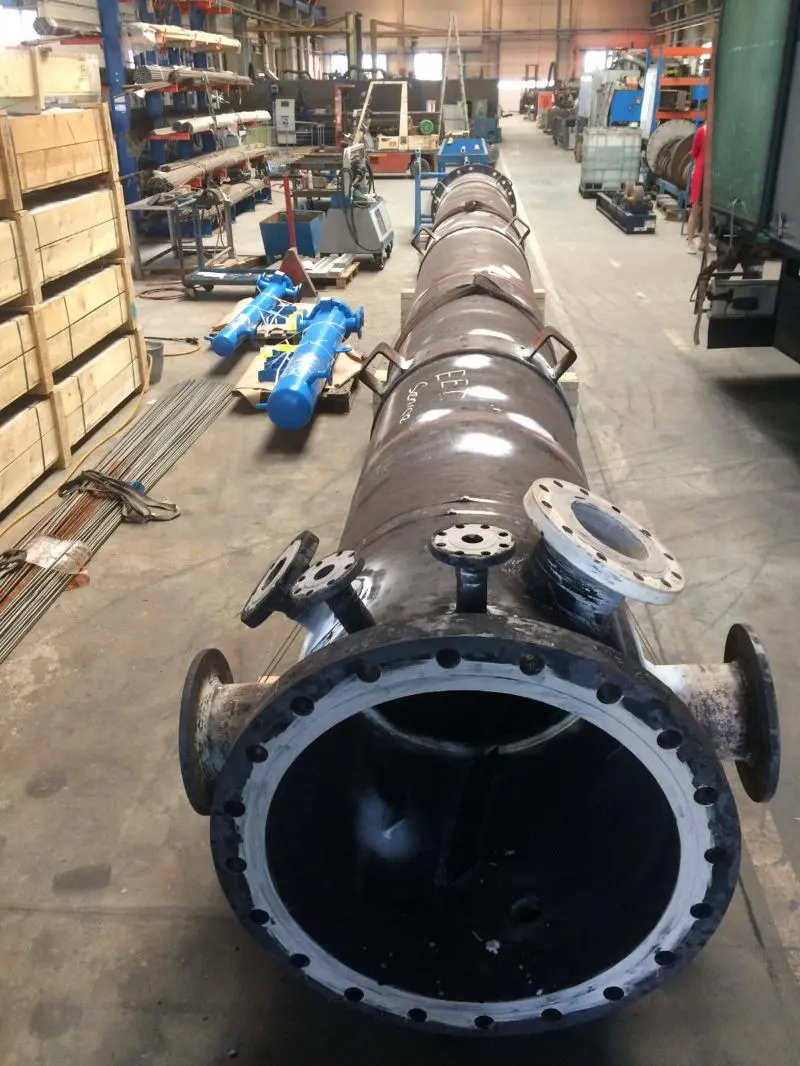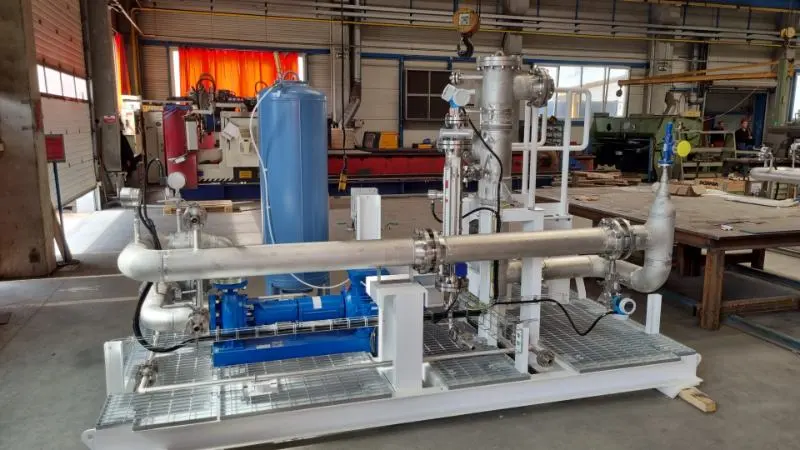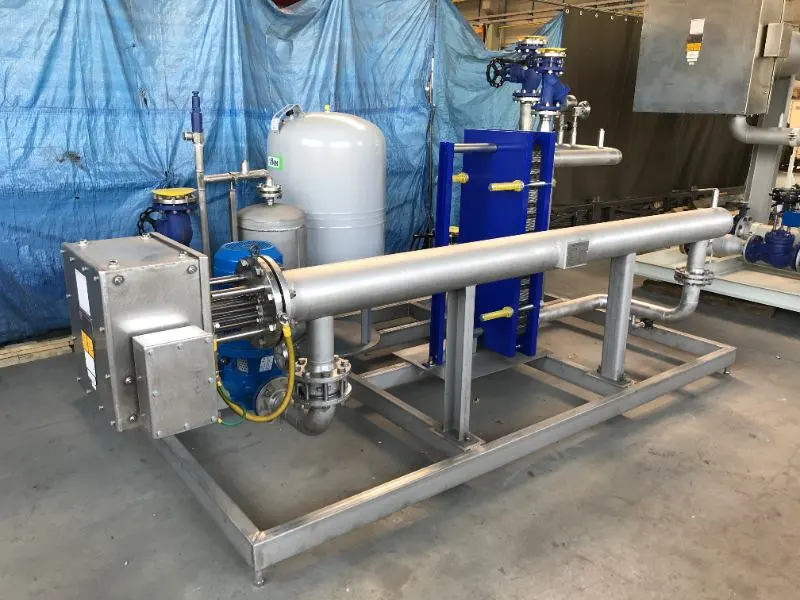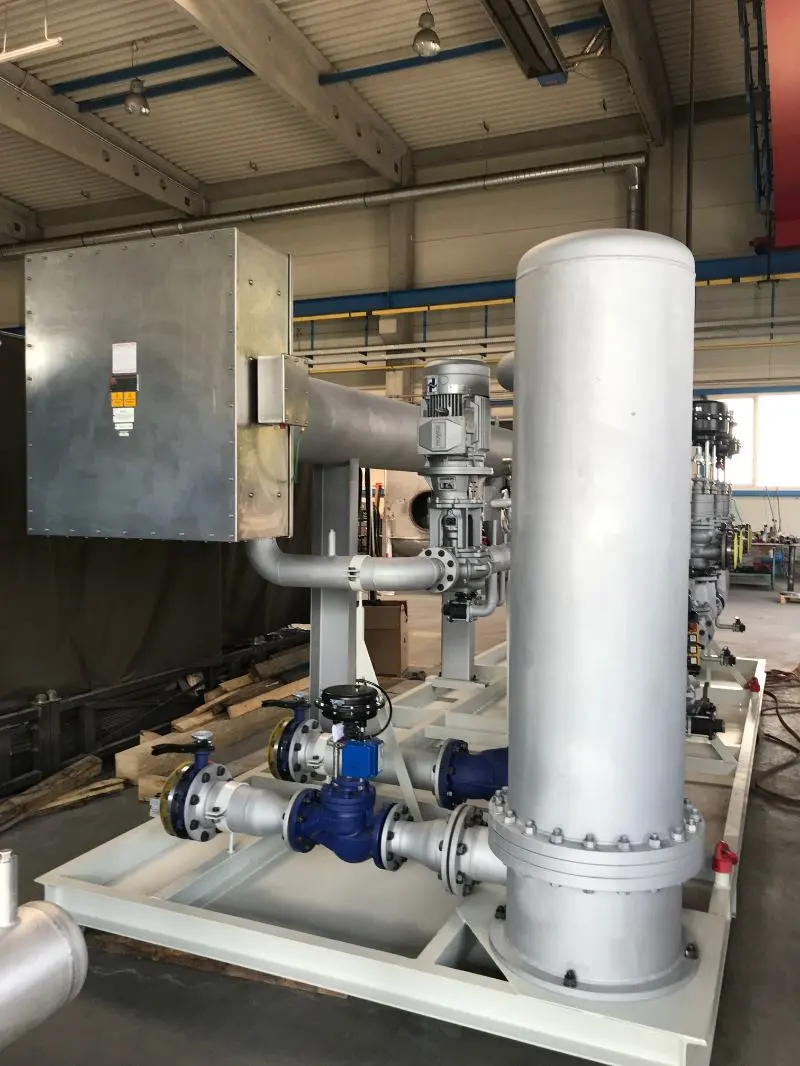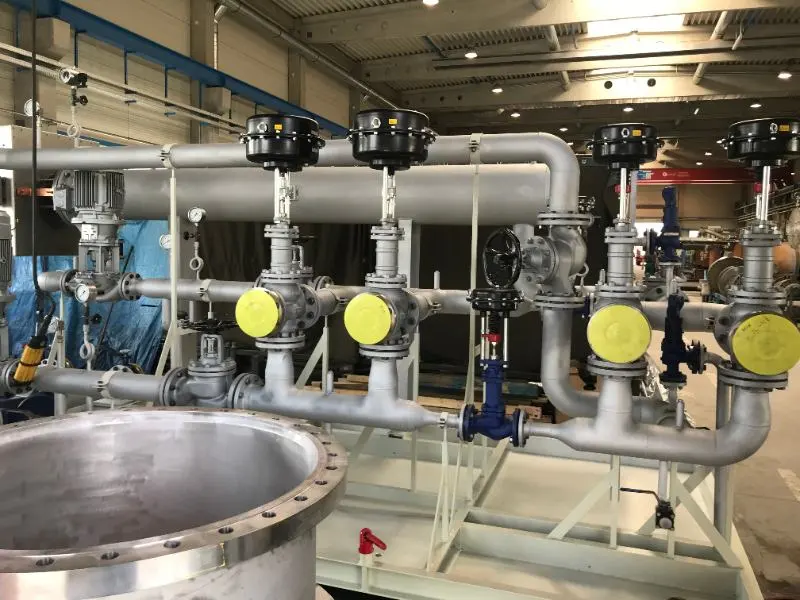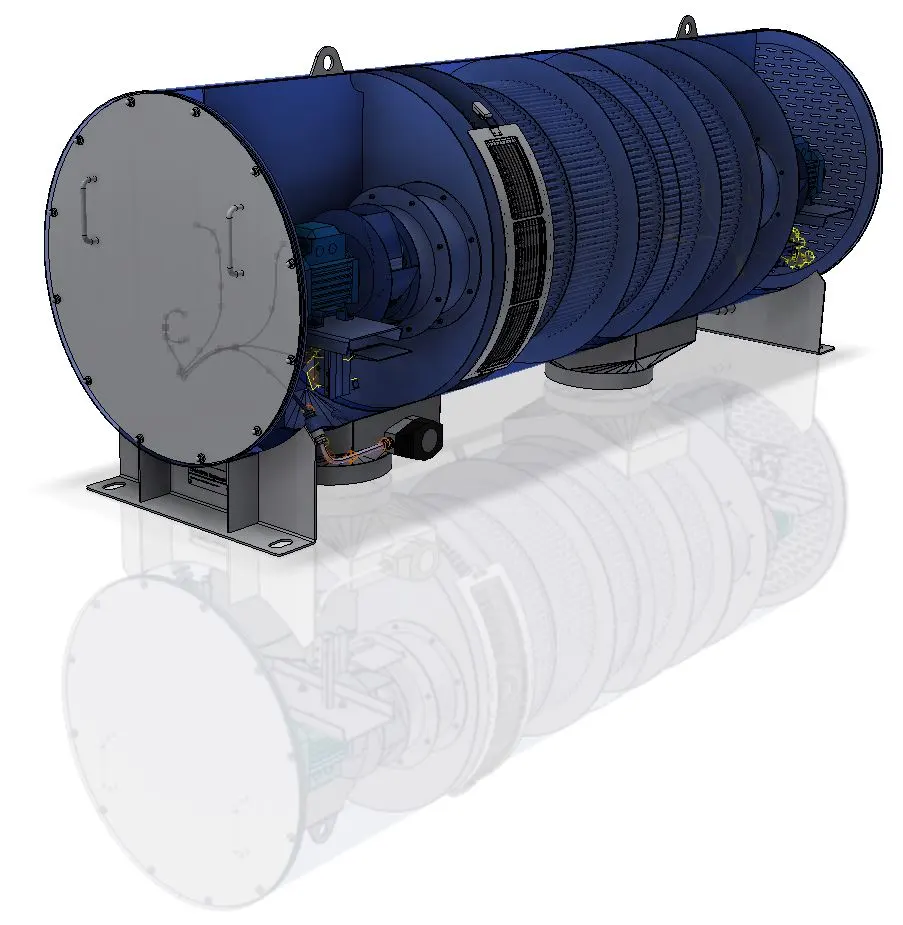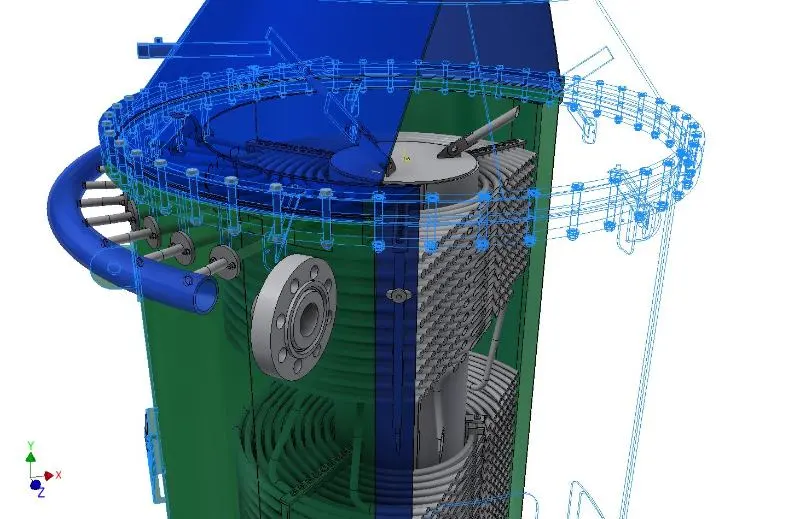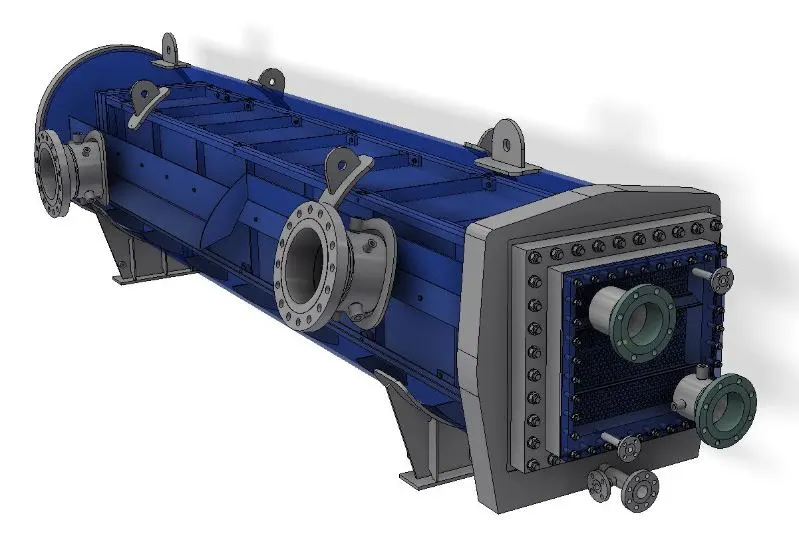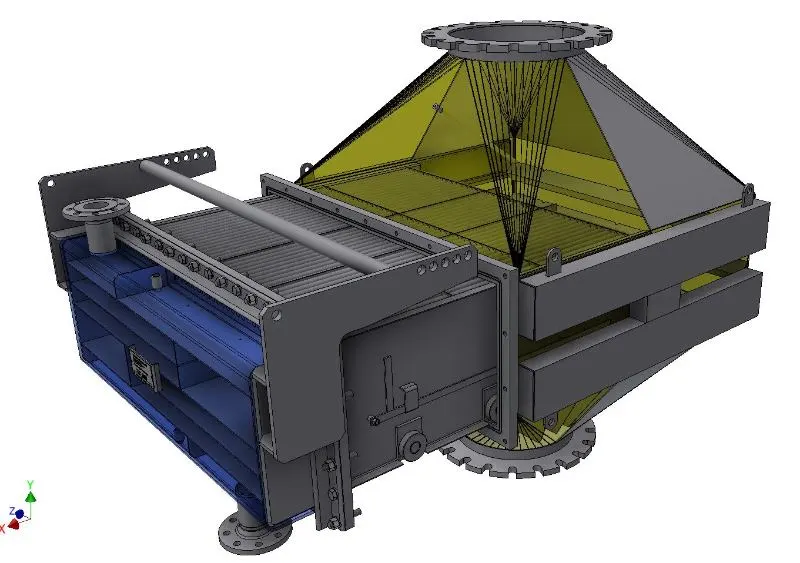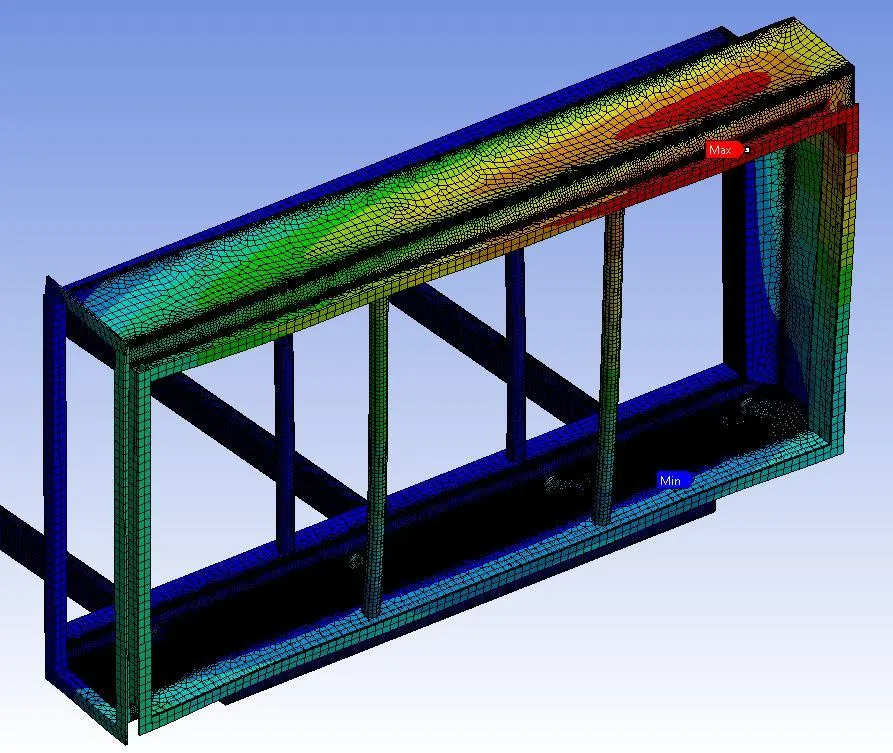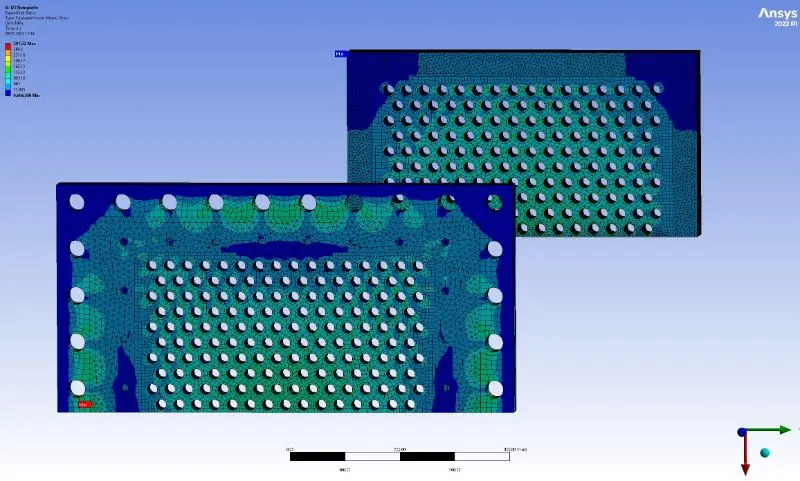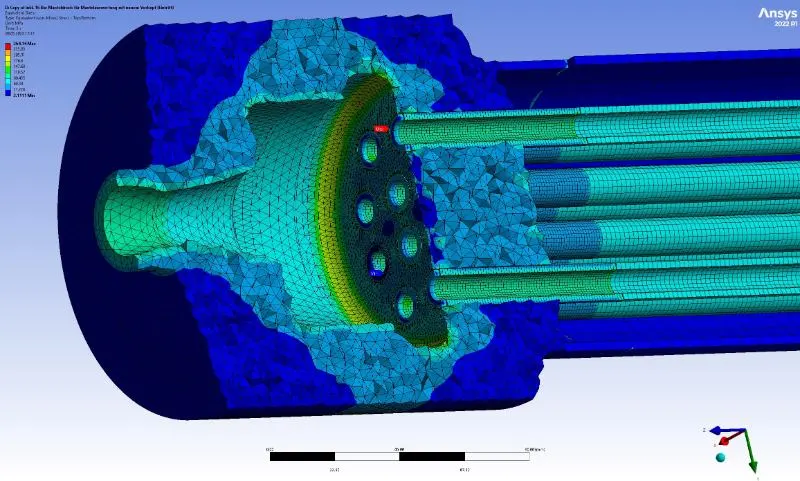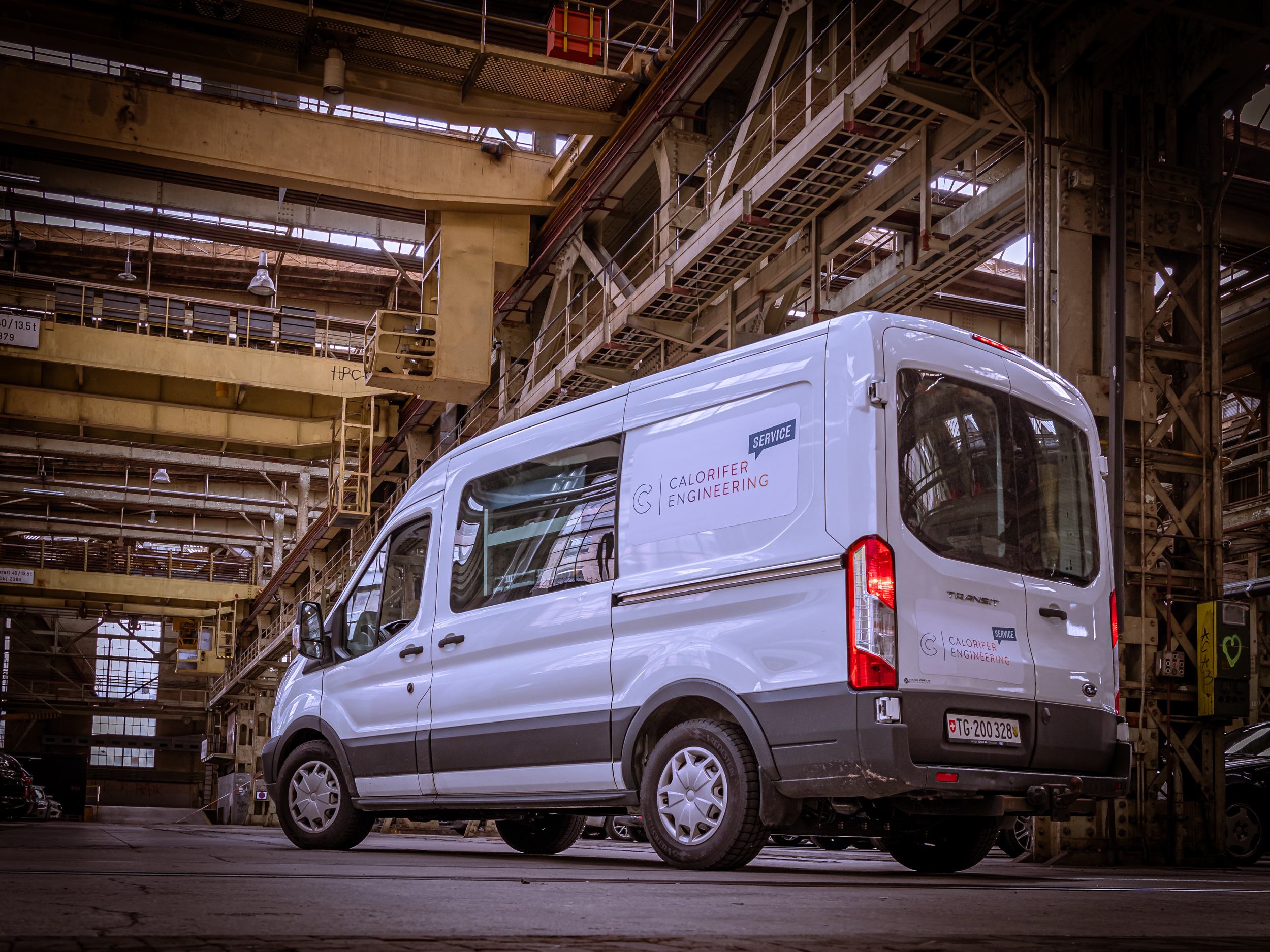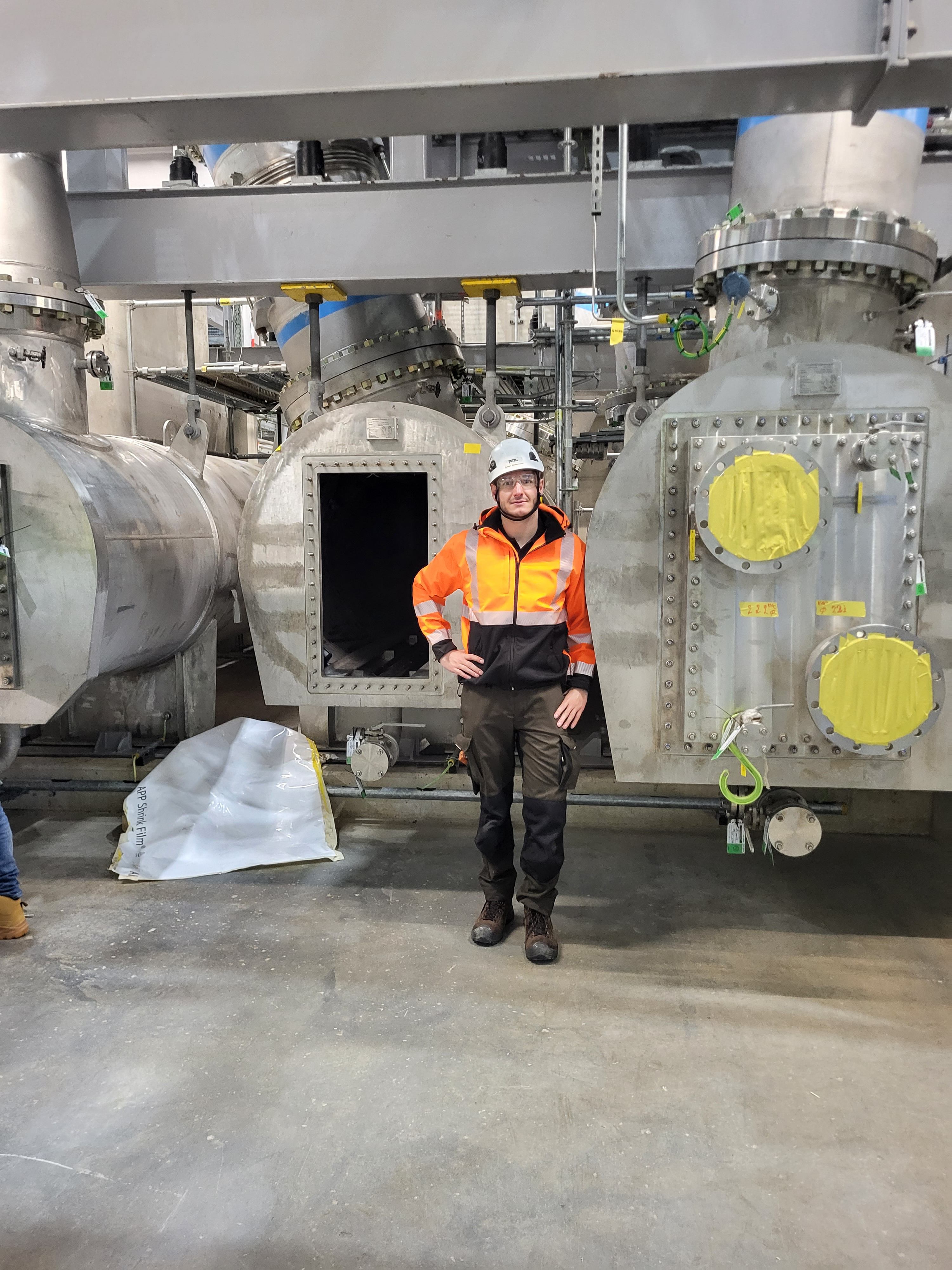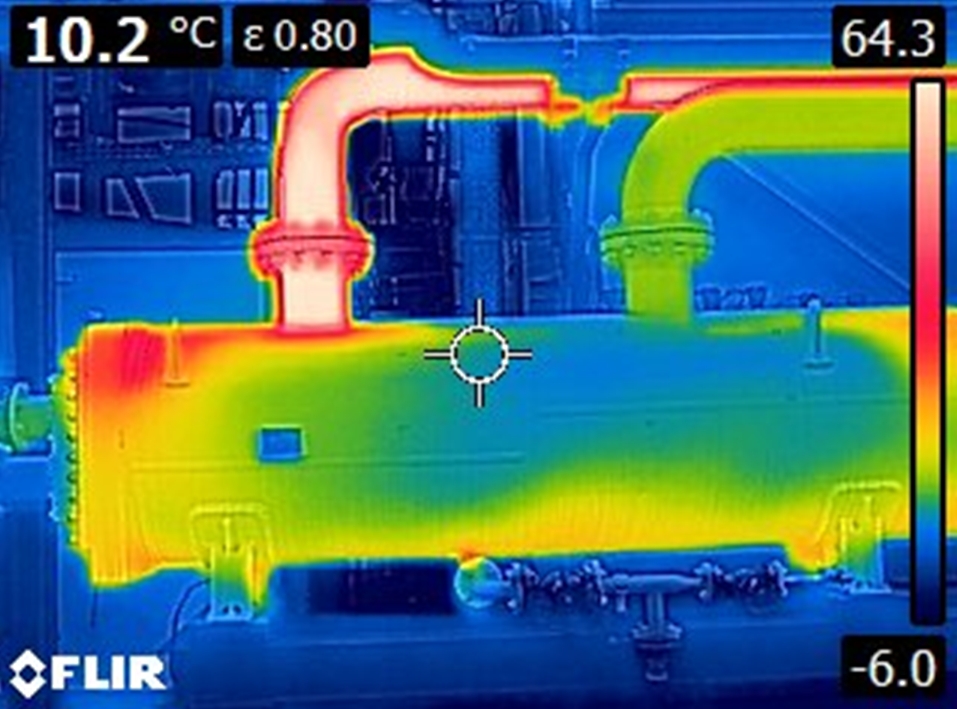Products
HERE IS WHAT WE OFFER
We offer a broad product portfolio based on customized heat exchange solutions, heat recovery systems, and pressure vessels. Our offer includes: shell-and-tube heat exchangers, compressed gas coolers, finned tube and bare tube heat exchangers, plate heat exchangers, containers and skids.
To ensure that you find the solution that best meets your needs, we are there to advise you right from the start. Have you opted for one of our heat exchange solutions? We take care of the layout, design as well as the production of your heat exchanger.
All-rounders:
Sophisticated shell-and-tube heat exchangers
A shell-and-tube heat exchanger transfers heat between two media through parallel tubes in a common shell, with one of the media flowing through the tubes and the other flowing around the outside to absorb or release heat.
The use of the shell-and-tube heat exchanger is becoming increasingly important. The requirements of the industry, the environment as well as the processes are constantly increasing and depending on the application and field of use, the product must be able to meet high expectations. In addition to thermodynamics, these can also include requirements for corrosion or high mechanical loads.
The proper selection and handling of materials and their connection (e.g., exchanger tubes and tube sheets) has remained a science in terms of their sensitivity. For particularly critical connections, we also use gap-free welding.
Field of application
- Power plant technology
- Chemical industry
- Power supply
- Environmental technology
- Paper and pulp industry
- Building materials and the ceramics industry
- Textile and plastics industry
- Food processing industry
- Sterile technology (FDA)
Pressure ranges and size
- Pressures: Vacuum operation up to 500 bar and higher
- Temperatures: up to 1000°C
- Diameter: up to 3 m
- Lengths: up to 20 m
- Weights: from a few kilograms to 70 tons and more
Materials
- Carbon steel
- 1.4541, 1.4307, 1.4571, 1.4404, 1.4539, 1.4828, etc.
- High-alloyed austenitic quality, e.g. 1.4539
- Heat-resistant quality such as 1.4828, 1.4841, 1.4878, etc.
- Non-ferrous metals such as Cu, CuNi10Fe, CuNi30
- Aluminium
- Duplex steel
- Titanium
- Nickel alloys
Cooler for compressors makes short work of gases
Compressor systems are used in industrial processes such as air separation, gas liquefaction or the production of chemical and metallic base materials. Gaseous media are compressed to higher pressures and thereby strongly heated. For technical and economic reasons, gaseous media such as air, oxygen, nitrogen, carbon monoxide, carbon dioxide, methane, etc., must be cooled after compression.
Implementation of the cooling process
At moderate pressures, the compressed and thus heated gas is passed through the cooler bundle on the shell side. Since gases are naturally poor heat conductors, enlarged surfaces are often used for these coolers. These can be finned tubes or "plate fins" from our own production.
On the tube side, the cooling liquid – usually water or a water-glycol mixture – is fed through the tubes. The cooling process may produce condensate when the temperature falls below the dew point, which is discharged by the separators integrated into the coolers.
At pressures above 50 bar, it has been shown that it is more economical to have the gas on the inside of the tube and the cooling medium on the shell side. This makes the heat exchangers more compact and affordable.
Field of application
- Large compressor manufacturer
- Plant engineers
- Air laying industry
- Gas industry
Product features
- Cooler diameter up to 3.50 m
- Length up to 12.00 m
- Individual weight per cooler up to 120 tons
Materials
Coats:
- Stainless steel
- Carbon steel
- CuNi10Fe oder CuNi30Fe
Heat exchanger tubes:
- CuNi10Fe or CuNi30Fe
- 1.4307, 1.4404, 1.4571, etc.
- Duplex steel
- Titanium
Fin material:
- Aluminum (coated or uncoated)
- Copper
Pressure and temperature range
- Pressures for process coolers above 100 bar and temperatures from -10°C to approx. 450°C
Choose the right pipe to reduce operating costs
Choosing the right pipe plays a crucial role. We distinguish between finned tube and smooth tube heat exchangers.
Heat exchangers with smooth tubes are suitable for the use of contaminated gases on the shell side. Contaminated gases can cause deposits on the tubes of heat exchangers, which reduces heat output and increases pressure loss. Through the right choice of pipe size, pipe arrangement and pipe division, the heat exchanger can be optimally adapted to customer requirements.
If the gases are clean, pipes with finned surfaces can be used. Depending on the temperature and material pairing, different systems are available. The use of sliding tube sheets or U-tubes ensures that no temperature-related stresses can form in the bundle. Gases, vapors or liquids can be used on the inside of the pipe. There is also the possibility of pipe installations (e.g. swirl and bulge belts). This can be used to force turbulent flows.
Finned-tube heat exchanger:
Field of application
- Process industry
- Drying industry
- Process industry
- Power plant technology
- Ventilation and air conditioning industry
Product features
- Compact finned tube systems
- Hot-dip galvanized oval finned tubes
- Coiled spiral finned tubes
- Extruded spiral finned tubes
- Welded spiral finned tubes
Smooth tube heat exchanger:
Field of application
- Air preheater waste incineration plants
- Coolers and heaters for chemical and process engineering applications
- Economizer (energy supply, environmental technology)
Product features
- Depending on the application, straight or U-shaped bent tubes
- With or without entry and exit cones
Operating areas and dimensions
- Internal pressures: vacuum operation up to approx. 80 bar
- External pressures: up to 1 bar overpressure
- Temperatures: up to 1000°C
- Element width: up to 3 m
- Element length: depending on the tube system up to 10 m
Materials
- Carbon steel
- 1.4541, 1.4307, 1.4571, 1.4404, 1.4828, etc.
- High-alloyed austenitic quality, e.g. 1.4539
- Heat-resistant quality such as 1.4828, 1.4841, 1.4878, etc.
- Non-ferrous metals such as Cu, CuNi10Fe, CuNi30, etc.
- Duplex steel, e.g. 1.4462
- Titanium
- Nickel alloys
Efficient and compact
The plate heat exchanger is a type of heat exchanger that consists of several thin plates arranged parallel to each other. Between the plates are channels through which the medium to be cooled or heated flows. The plates are formed to create a turbulent flow, which results in a high heat transfer coefficient.
The screwed plate heat exchanger is particularly easy and quick to assemble and disassemble. It can also be easily extended by adding more plates.
The brazed plate heat exchanger is small, compact because the plates are joined together by brazing and therefore do not require a frame.
Field of application
- Building services (heating technology, solar systems or drinking water systems)
- Industry (power plants or classic mechanical engineering)
- Food industry (milk cooler)
- Refrigeration or air conditioning technology
Product features
- Screwed
- Soldered
Materials
Plates:
- 1.4404
- 1.4301
- Titanium
- Special materials on request.
Pressure and temperature range
Screwed:
- 31 Bar
- 200°C
Soldered:
- 35 Bar
- 200-350°C
Your medium securely enclosed
A container is used for storage or as a process element. We use containers to keep gases or liquids safely under lock and key. Containers come in various forms: as columns, with double shell, with built-in agitators and so on.
As we are used to manufacturing custom pressure vessels, we are sure to find a suitable solution for every requirement.
Field of application
- Power plant technology
- Chemical industry
- Power supply
- Environmental technology
- Paper and pulp industry
- Baustoff- und Building materials and the ceramics industry
- Textile and plastics industry
- Food processing industry
Pressure ranges and size
- Pressures: Vacuum operation up to 200 bar and higher
- Temperatures: up to 850°C
- Diameter: up to 3 m
- Lengths: up to 25 m
- Weights: from a few kilograms to 40 tons and more
Materials
- Carbon steel
- 1.4541, 1.4307, 1.4571, 1.4404, 1.4828, etc.
- High-alloyed austenitic quality, e.g. 1.4539
- Heat-resistant quality such as 1.4828, 1.4841, 1.4878, etc.
- Duplex steel, e.g. 1.4462
- Titanium
- Nickel alloys
Compact skids ensure perfect heat exchange processes
We have several years of experience in heat exchanger construction. Today, we also apply this know-how to the realization of skids. Skids are solutions for industrial applications on which various equipment such as pumps, filters, valves, instruments etc. and of course heat exchangers are mounted. A control system can also be integrated.
Skids are then transported and installed at their final destination. It is an efficient solution for time-saving installation and commissioning of industrial plants, as the skids are already prefabricated in the workshop and only need to be connected after assembly.
Skids are efficient solutions that are made according to your requirements. Skids for industrial solutions are often used in the oil and gas industry, the chemical industry, or other industries.
field of application
- all industries where heating and cooling is required
Pressure ranges and size
- Vacuum operation up to 40 bar and higher
- Temperatures up to 200°C
- from a few kilograms to 20 tons
- Deviating ranges on request
Save resources with cool ideas
means of thermal engineering design. In the best case, we will find a solution for you that can save costs and resources.
We are also happy to support you with strength calculations, earthquake calculations, wind load calculations and load change calculations of heat exchangers and other pressure vessels. Thanks to the network we have built up over the years, we have the expertise to build pressure vessels in accordance with country-specific regulations. Canada, Australia and South Korea are no problem for us.
Standards:
- PED 2014/68/EU
- AD2000
- EN 13445
- ASME VIII Div.1
- SIA 261
- EN 1998
- EN 1991
Software:
- Autodesk Inventor
- Autodesk Autocad
- Autodesk Vault
- Ansys Mechanical
- HTRI
- HTC (own program)
- Lauterbach process engineering
OPERATIONAL SAFETY AND PERFORMANCE IN FOCUS
Heat exchangers are the energy link between process circuits. They are therefore located at important nodes that must function to ensure constant operation. Especially in times of rising energy costs, the focus should also be extended to performance. Clean and optimally adjusted heat exchangers can make a major contribution to energy efficiency and therefore cost savings.
Calorifer provides support on site or in our workshop.
Preventive maintenance
We work with you to determine the condition of your heat exchanger before problems arise.
- Pressure testing
- Dye penetration tests
- Endoscope images
- Condition of the seals
- thermal analyses
- calculations
repair and spare parts
We support you when there are problems to solve.
- Gasket replacement
- Repair welding
- Re-tubing of bundles
- Mechanical, chemical cleaning
- Production of spare parts
Contact also directly at service@caleng.ch

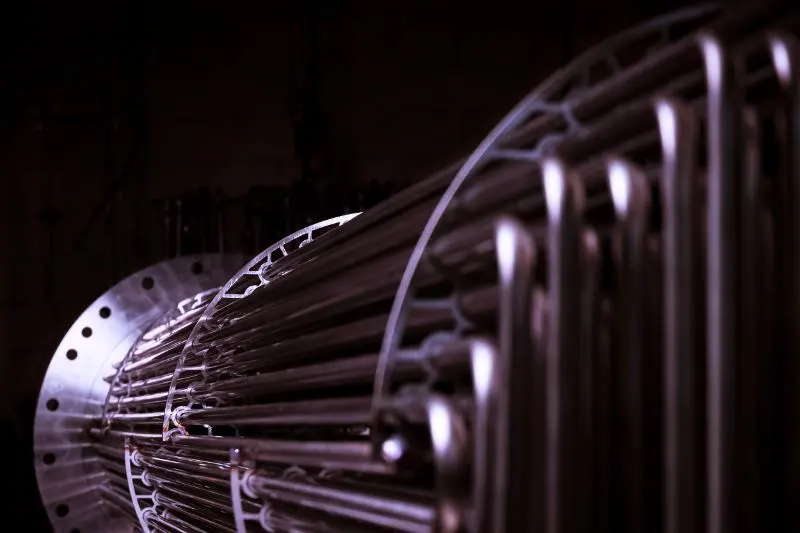
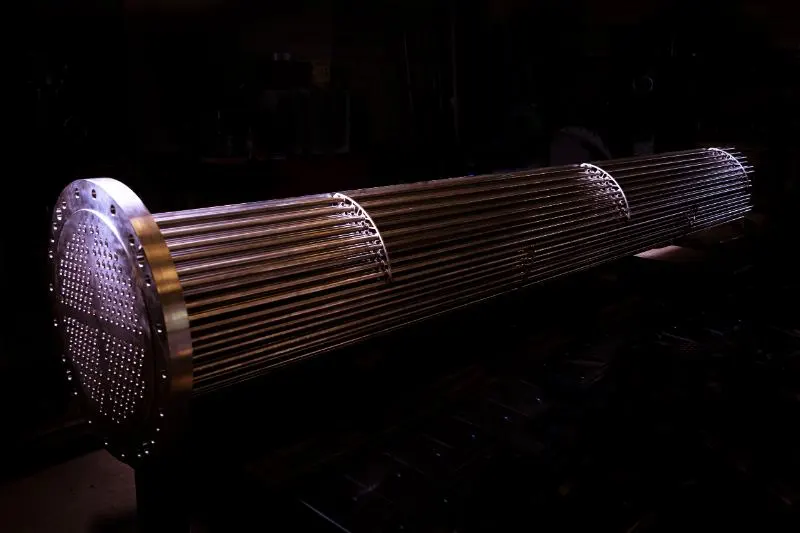
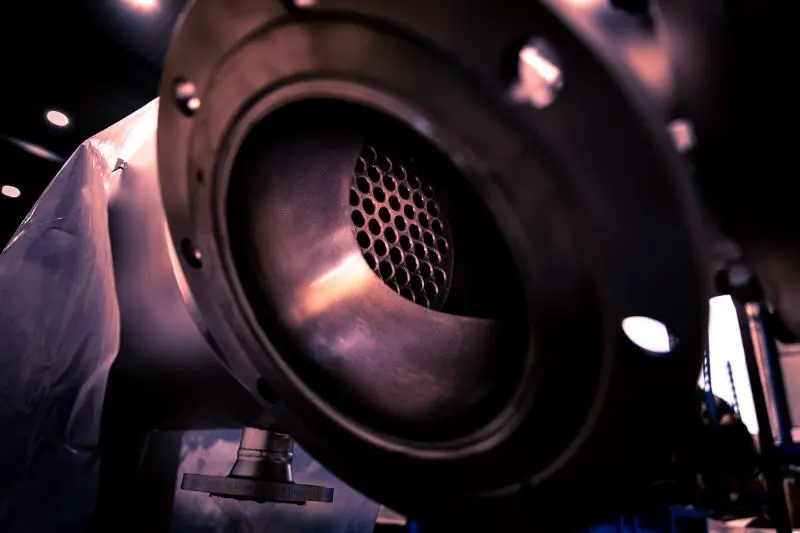

.webp)
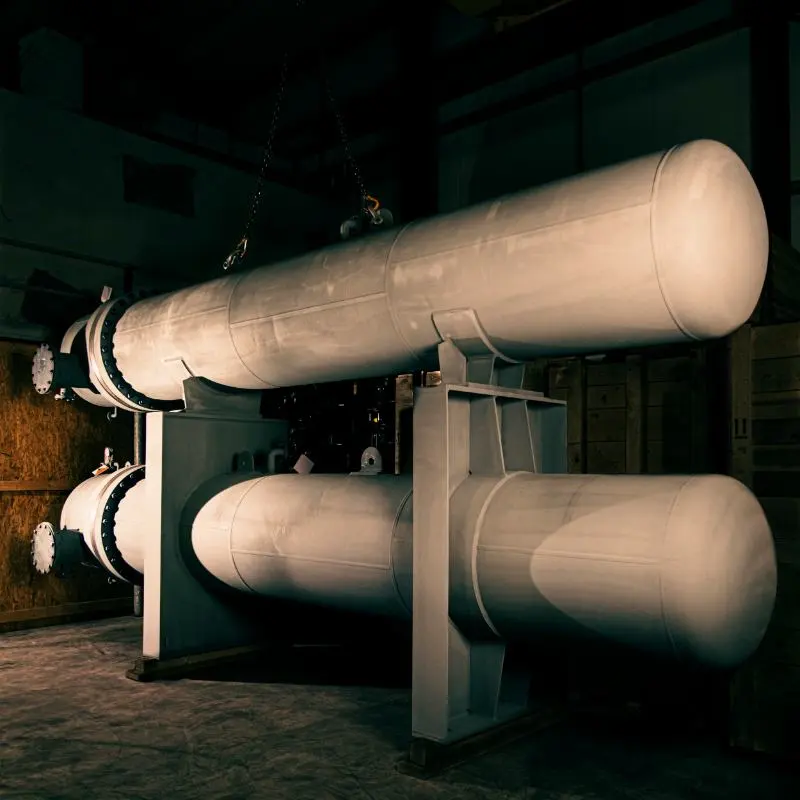
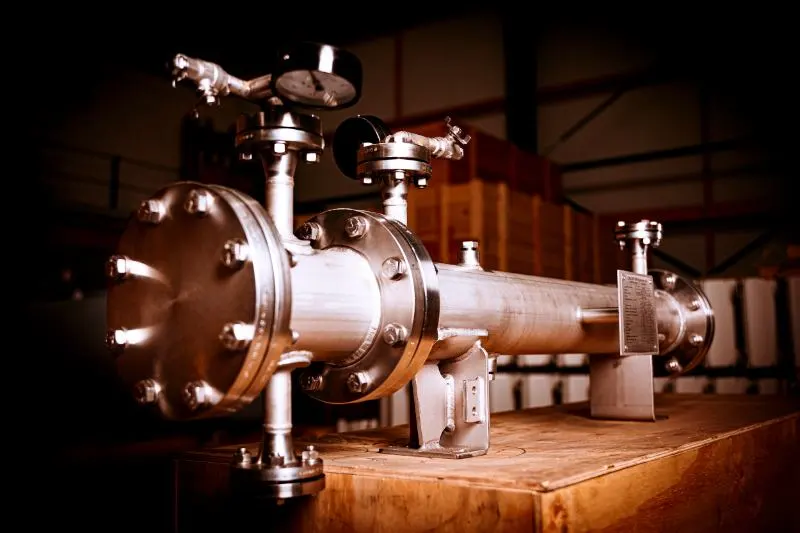


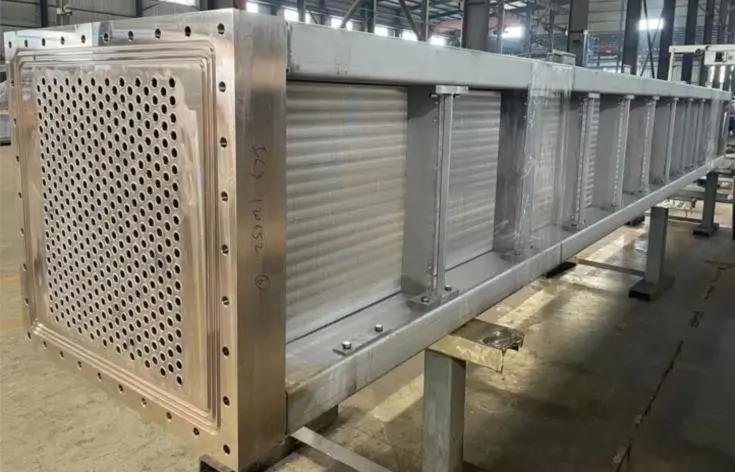
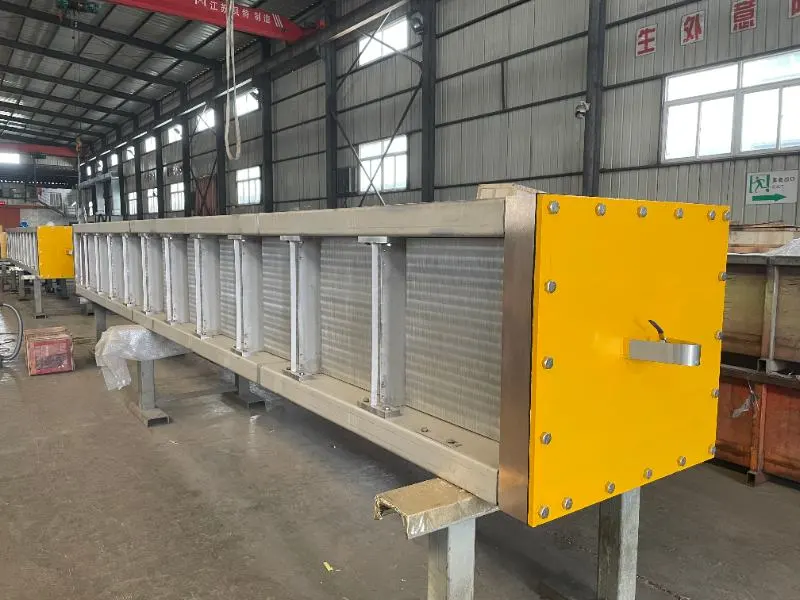
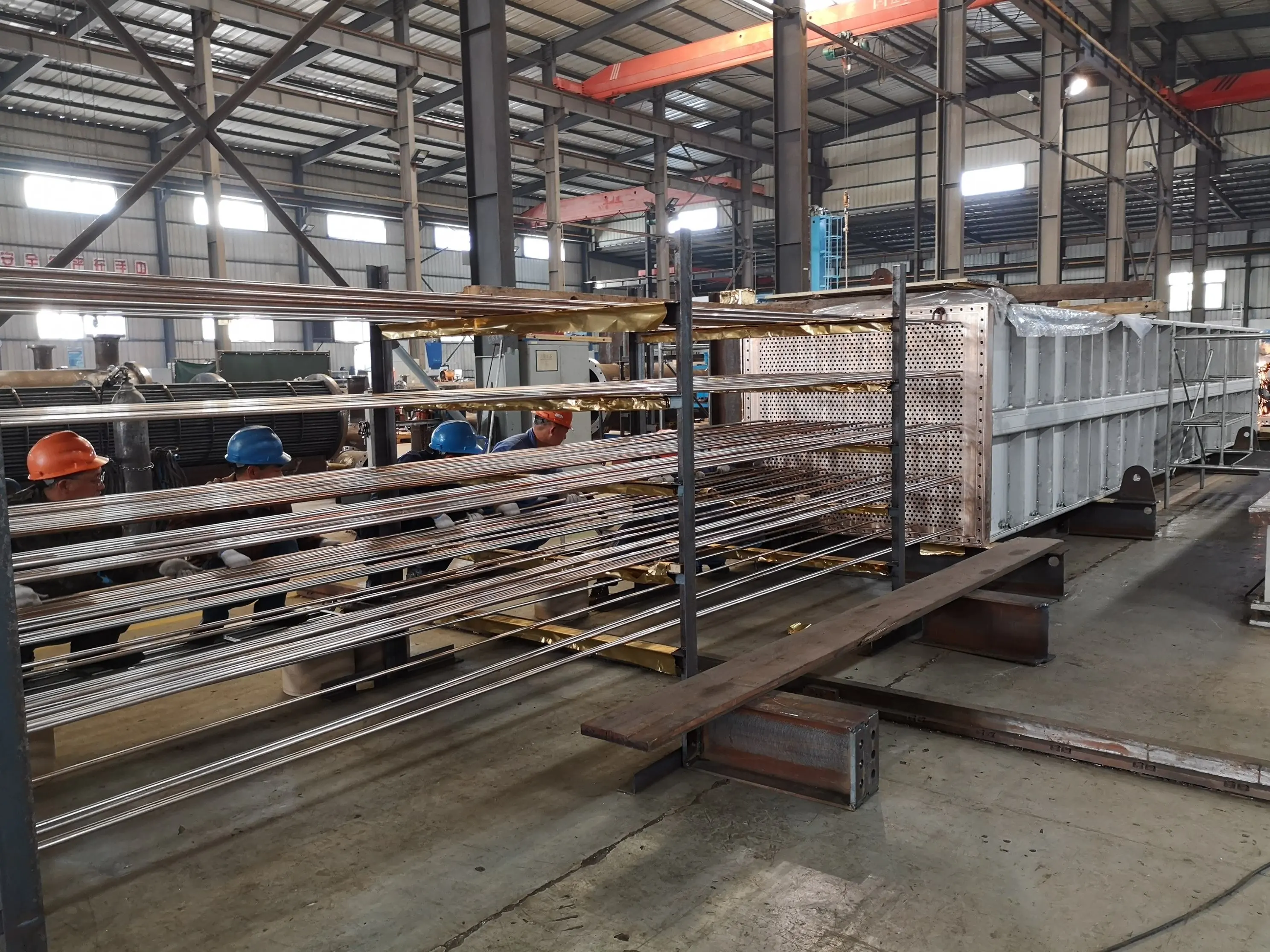
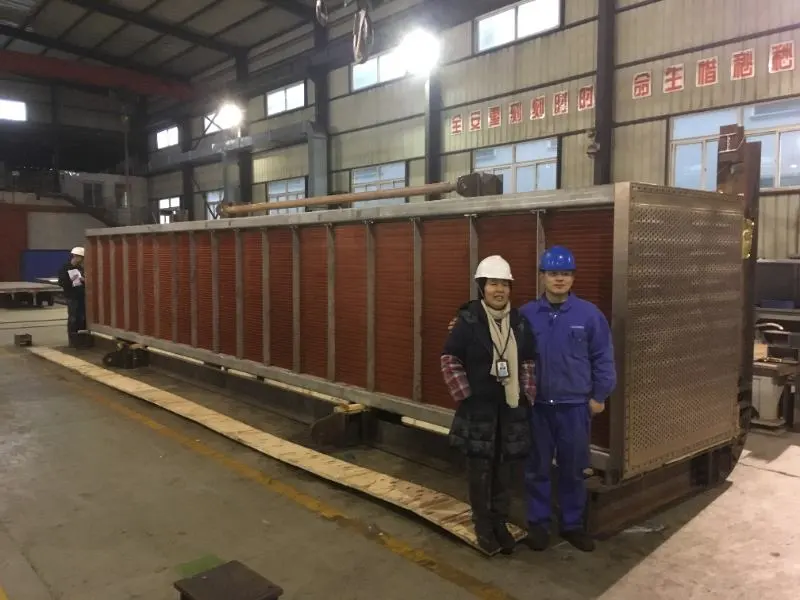
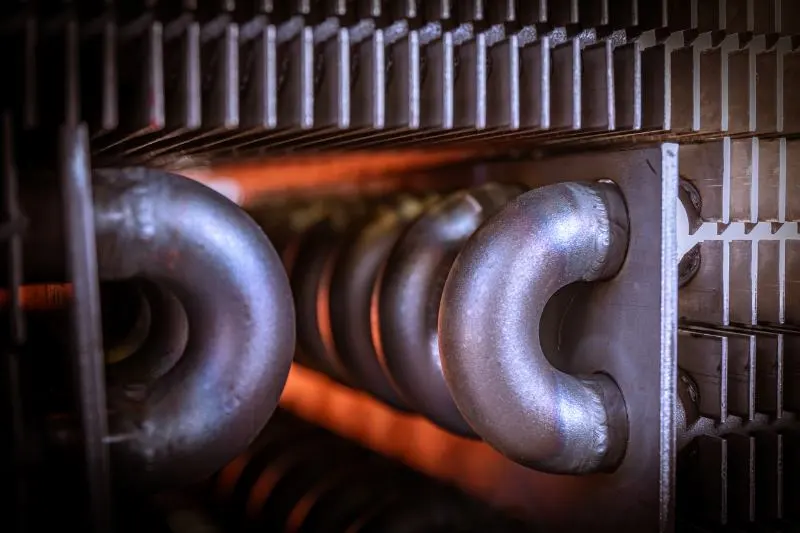
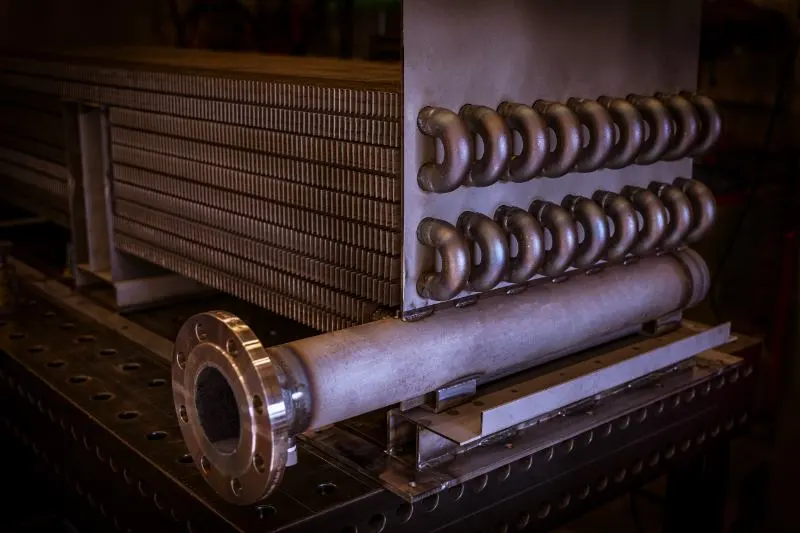

.webp)
